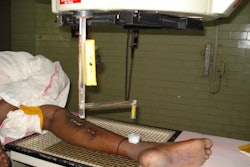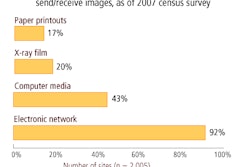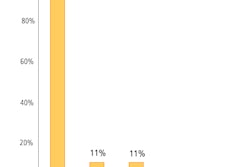The odds of children surviving for at least 10 years after being treated for early-stage Hodgkin's disease are 85% to 97%, and even children with advanced-stage disease have survival odds of 70% to 90%. But these survivors aren't necessarily out of the woods, as they have a seven to 18 times higher risk than the average adult population of being diagnosed with cancer as an adult.
The risk is significantly higher for women than for men, according to a study published in the International Journal of Radiation Oncology, Biology, Physics (September 1, 2008, Vol. 72:1, pp. 24-33). Even after taking breast cancer into account, women remain at greater risk than men for a subsequent malignancy.
The study followed the outcomes of 930 pediatric patients for up to 39 years who had been treated for Hodgkin's disease at five hospitals between 1960 and 1990. More than 30 variables related to demographic characteristics, treatment factors, and outcome measures were evaluated from the time of diagnosis through calendar year 2002, representing 15,154 patient-years of analysis.
Hospitals participating in the study included Children's Hospital Boston and the Dana-Farber Cancer Institute in Boston; Johns Hopkins' Sidney Kimmel Cancer Center in Baltimore; St. Jude Children's Research Hospital in Memphis, TN; the University of Florida Medical Center in Gainesville; and the University of Rochester Medical Center in Rochester, NY.
Patient characteristics
Patients younger than 19 years who had no previous history of cancer were enrolled. Of the 930 children, 57.2% were male and 49.8% were female. Their mean age at diagnosis was 13.6 years; 61.4% of the patients were diagnosed as stage I and II, and 38.6% were diagnosed as stage III and IV.
Radiation therapy and chemotherapy were administered to 48% of the patients; 43% received radiation alone, and 9% received chemotherapy alone.
The survival rate was 74% at 25 years of follow-up. One hundred forty-seven patients died of Hodgkin's disease and 37 patients died from a secondary cancer.
Risk ratios differ
Almost 11% of the patients developed a secondary case of cancer. Breast cancer was most prevalent, followed by thyroid, gastrointestinal, leukemia, soft-tissue sarcoma, bone, lymphoma, central nervous system, head and neck, and lung.
Of these 102 patients, 30 were male and 72 were female. Age at diagnosis did not differ. Women were far more susceptible to contracting breast or thyroid cancer than men, and women also contracted more types of cancer, according to the researchers.
Standard incidence ratios (SIR) were calculated as the ratio of observed cases to expected cases. Age, gender, and site-specific incidence rates from the registry of the Surveillance, Epidemiology, and End Results (SEER) Program of the National Cancer Institute were used to calculate the number of expected cases.
Risk of secondary cancers between women and men
|
The risk of secondary cancer was similar regardless of disease stage at diagnosis or primary therapy, the researchers reported. When the entire patient population was taken into consideration, mean radiation dose was greater at 32.5 Gy for patients who developed cancer compared to those who did not, at 29.2 Gy.
Other findings
Other significant findings included the following:
- Only one of 98 girls (1%) who received irradiation to the pelvis developed breast cancer compared to 28 of 272 (10.3%) girls who did not. This was presumably related to ablation of ovarian function by radiation.
- Solid malignancies did not develop until 8.2 years after therapy.
- Acute leukemia uniformly occurred within 6.6 years after combined chemoradiation therapy for 77% of the patients who developed it. Children who developed leukemia as a secondary malignancy did not survive.
- Breast cancer tended to occur 10 to 15 years after diagnosis, and sarcomas occurred 15 to 20 years after diagnosis.
- Children treated between the ages of 12 and 16 were more likely to develop secondary cancers than children who were younger or older, largely due to the contribution of breast cancer. The researchers speculate that younger patients were less aggressively treated.
- About 75% of secondary cancers occurred within a radiation field, but the researchers did not observe a relationship between the volume of the body irradiated and the development of cancer.
- The probabilities of developing a secondary cancer were similar at increasingly longer follow-up intervals: 7% for up to 20 years after treatment, and 6% from 21 to 30 years. Patients who relapsed had the same level of risk as those who did not.
Treatment for pediatric Hodgkin's disease has been modified significantly since 1990, and risk of secondary malignancy may be lower with current treatment approaches. The fact that women are more susceptible than men to secondary cancer merits study of genetic susceptibilities and hormonal influences, and the research team recommends that this be undertaken.
By Cynthia Keen
AuntMinnie.com staff writer
October 28, 2008
Related Reading
Late effects of Hodgkin's lymphoma salvage therapy 'significant,' October 20, 2008
Salvage radiotherapy effective in relapsed or refractory Hodgkin's disease, April 5, 2005
Study: Kids face more problems after beating cancer, July 15, 2004
Copyright © 2008 AuntMinnie.com


















